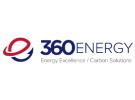The greenhouse industry is no stranger to evaluating new technology. Lighting advancements are no exception. Without the proper lighting for your plant, the product's quality can decline and leave a greenhouse with less net produce than the years prior. No matter the greenhouse location, it is essential to explore lighting options that best suit your crop, environment, and greenhouse structure.
Written by Lysandra Naom
As lighting becomes, more advanced, dimmable and varying light spectrum options have become available. This allows growers to customize their lighting cycle based on the plant's needs to minimize plant stress and maximize quality and productivity. It could also open the option for growers to consider growing different plants based on market demand/pricing conditions. As systems become more intricate, a greenhouse can have more control over the lighting by keeping track of the Daily Light Integral (DLI), the amount of light that the plant is receiving, and using their lights to cater to the plant, ensuring healthy growth.
High Pressure Sodium lights (HPS) have been a popular lighting choice for greenhouses. HPS lighting benefits to customers have been appealing: a cheaper alternative, extra heat, and a spectrum of light that works for the plant's growth. However, as LED lighting becomes more available and researched in the greenhouse industry, it has become a favourable choice.
Light Emitting Diode (LED) lighting varies from HPS as the lighting produced is fully used by the plant; studies show this creates a greater yield in production for many crops. LED lighting, typically the more expensive choice, has become a manageable investment for many greenhouses due to the energy savings and incentives. This financial assistance allows greenhouses to set aside the financial strain on lighting investment and focus on what lighting is the best option for their crop. For instance, with blackout curtains now being a mandate in more areas, benefits are shown to make the switch to LEDs, as they give off less heat. This helps in reducing heat stress on the plant compared to HPS lighting. Using the available aid and resources, greenhouses can now begin to plan the switch from HPS to LED and assess if this is the best choice for their product.
What type of lighting do you use? Are you planning a switch from HPS? Feel free to contact Tom Brown at tom.brown@360energy.net
For more information: 360 Energy
360 Energy
www.360energy.net
